The Xiaobai evaluation database has added the energy efficiency curve for the “Snapdragon 7+ Gen2”. Let’s take a look at the performance of this processor, which is humorously referred to as “Little 8+” or “Snapdragon 8+–“.
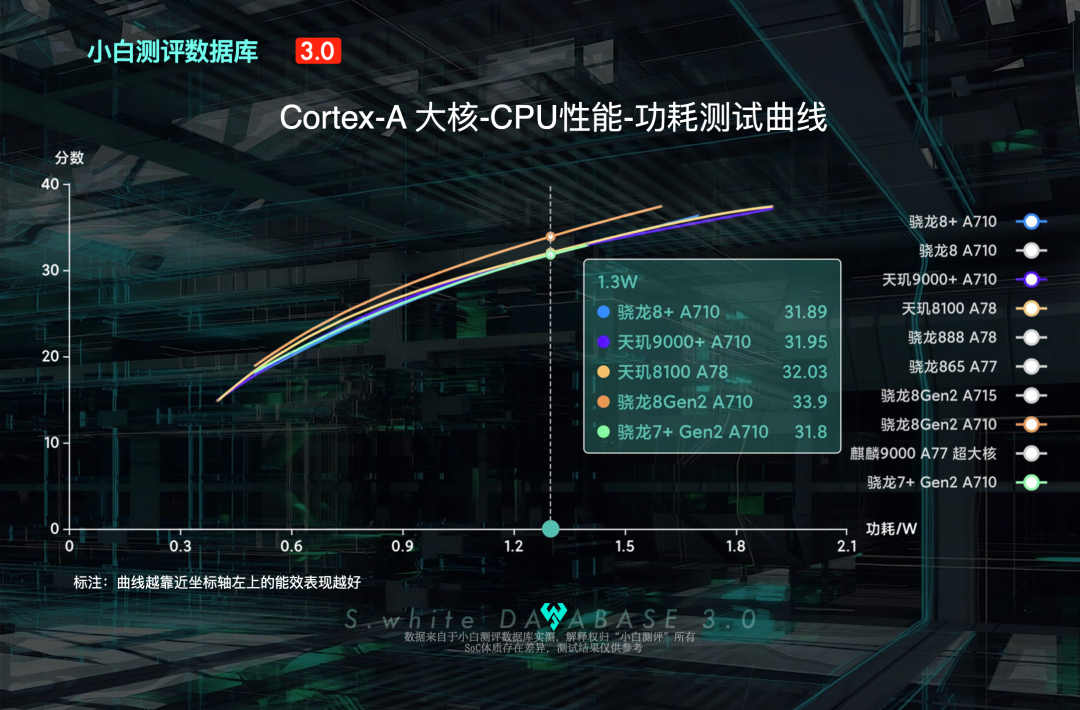
In terms of CPU, the Snapdragon 7+ Gen2 has a lower frequency compared to the Snapdragon 8+, resulting in a decrease in peak performance. However, in terms of energy efficiency, the performance of the super core (X2) and large core (A710) shows almost no difference from the 8+, with their energy efficiency curves nearly overlapping;
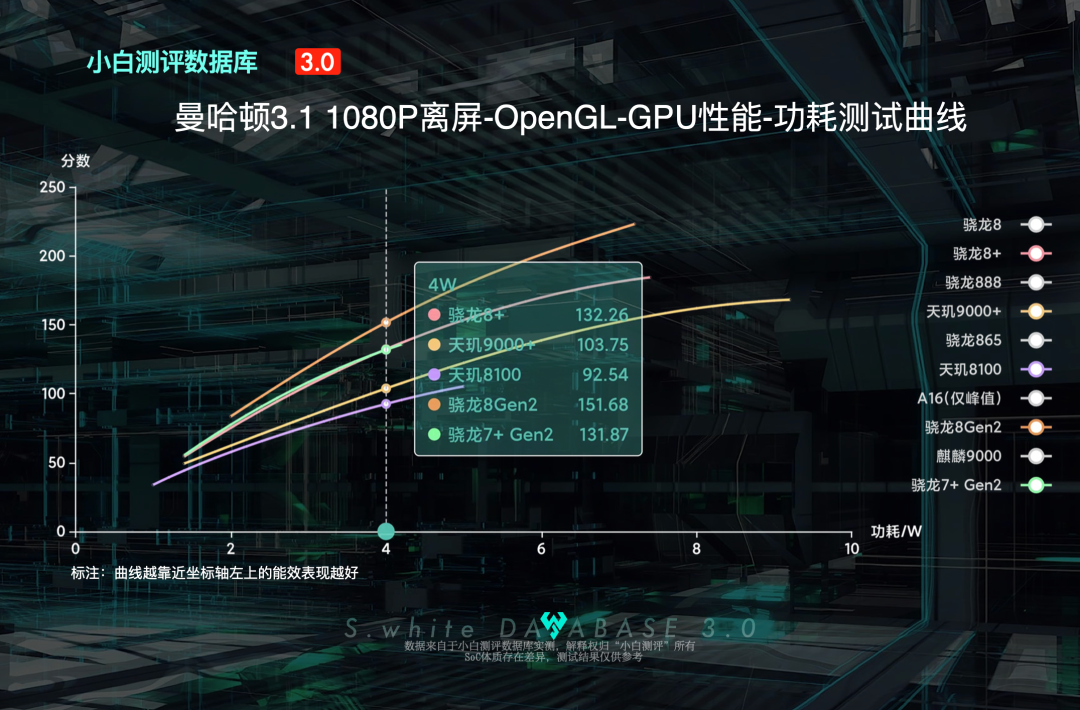
Regarding the GPU, the frequency has been cut from 900 MHz to 580 MHz, leading to a significant drop in GPU performance compared to the 8+. For instance, in Manhattan 3.1 at 1080P off-screen, the peak is 136 FPS with a power consumption of 4.22 W, which is about 25% lower in peak performance and approximately 40% lower in power consumption than the 8+.
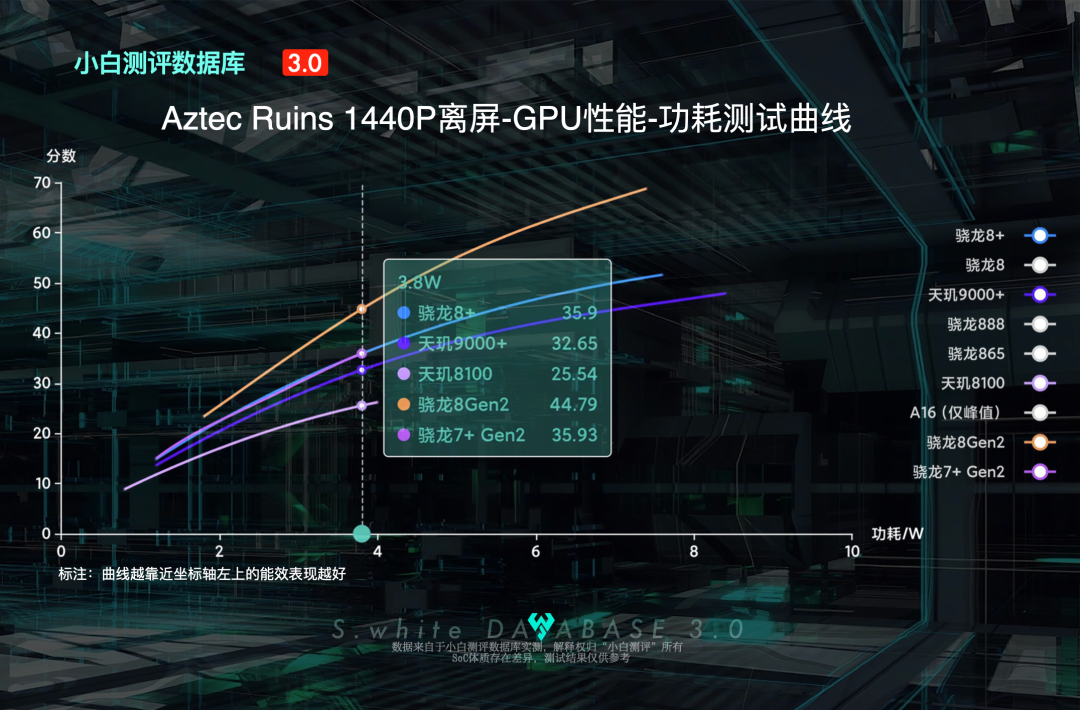
Overall, the Snapdragon 7+ Gen2 essentially represents a small segment of the 8+, outperforming the Dimensity 9000 and the 8 series, as seen in the Vulkan 1440P Aztec off-screen tests.
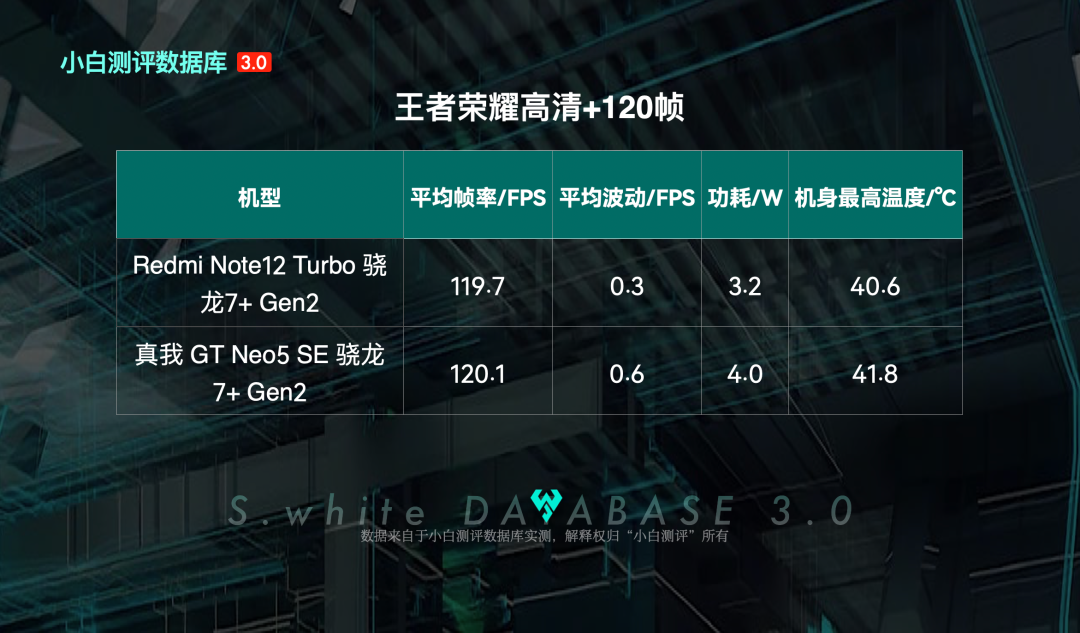
The Snapdragon 7+ Gen2 has indeed performed impressively. The two models already released, the Redmi Note 12 Turbo and the Realme GT Neo5 SE, can run Honor of Kings at high definition 120 FPS smoothly, with the Redmi consuming 3.2W, which is 0.8W lower than the Realme;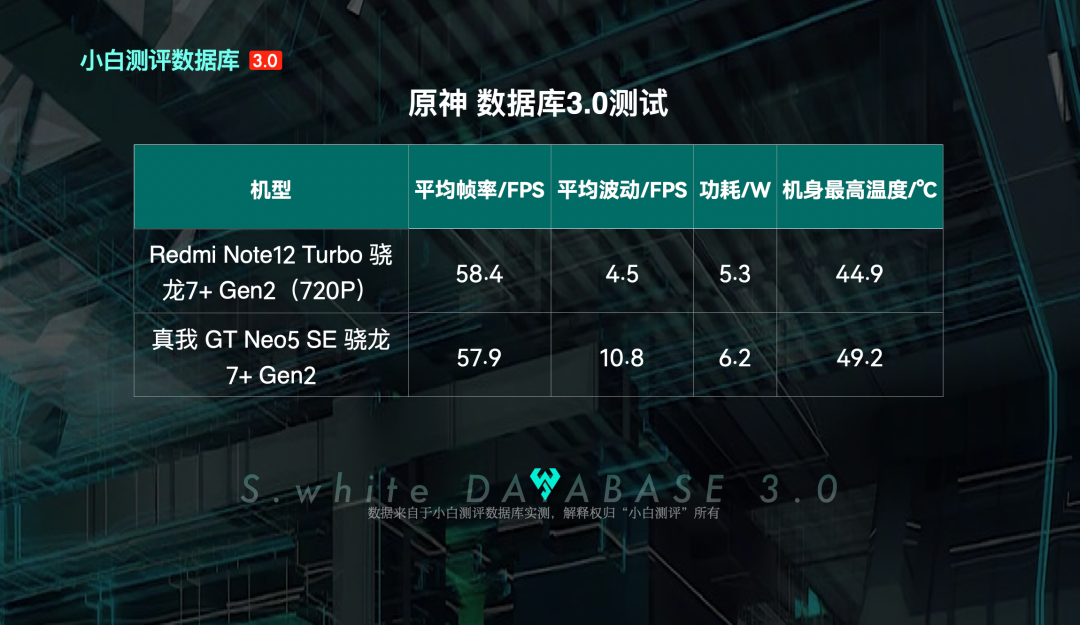 In the Genshin Impact database 3.0 model test, the Redmi Note 12 Turbo achieved an average frame rate of 58.4 FPS with a power consumption of 5.3 W and a maximum temperature of 44.9℃, showing very good performance.
In the Genshin Impact database 3.0 model test, the Redmi Note 12 Turbo achieved an average frame rate of 58.4 FPS with a power consumption of 5.3 W and a maximum temperature of 44.9℃, showing very good performance.
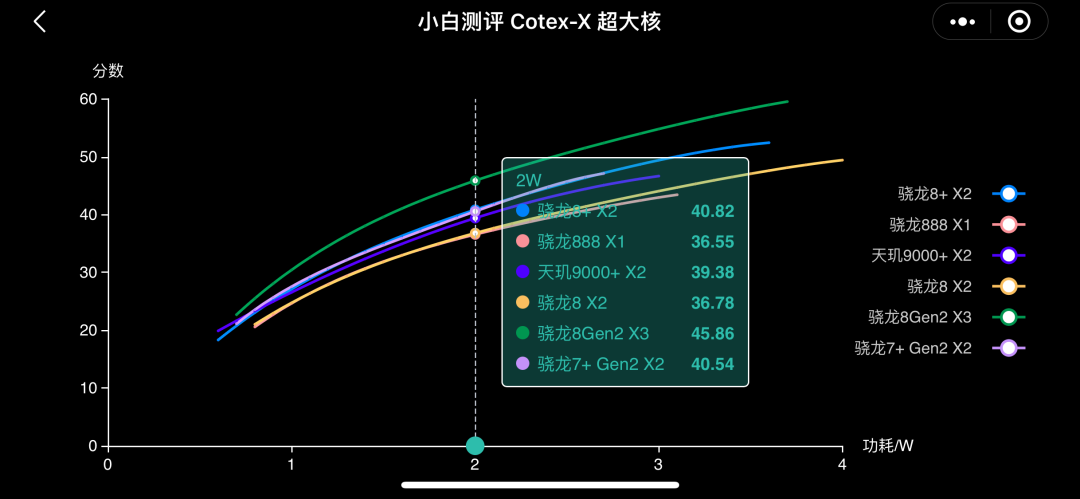
All of the above is based on the Xiaobai evaluation database 3.0 model test, under standard testing conditions: ambient temperature 25℃±0.5℃, screen brightness 350 nit, sound 50%, performance mode. For details on the Xiaobai evaluation database 3.0 testing model, you can reply “database testing manual” in the WeChat public account for reference.
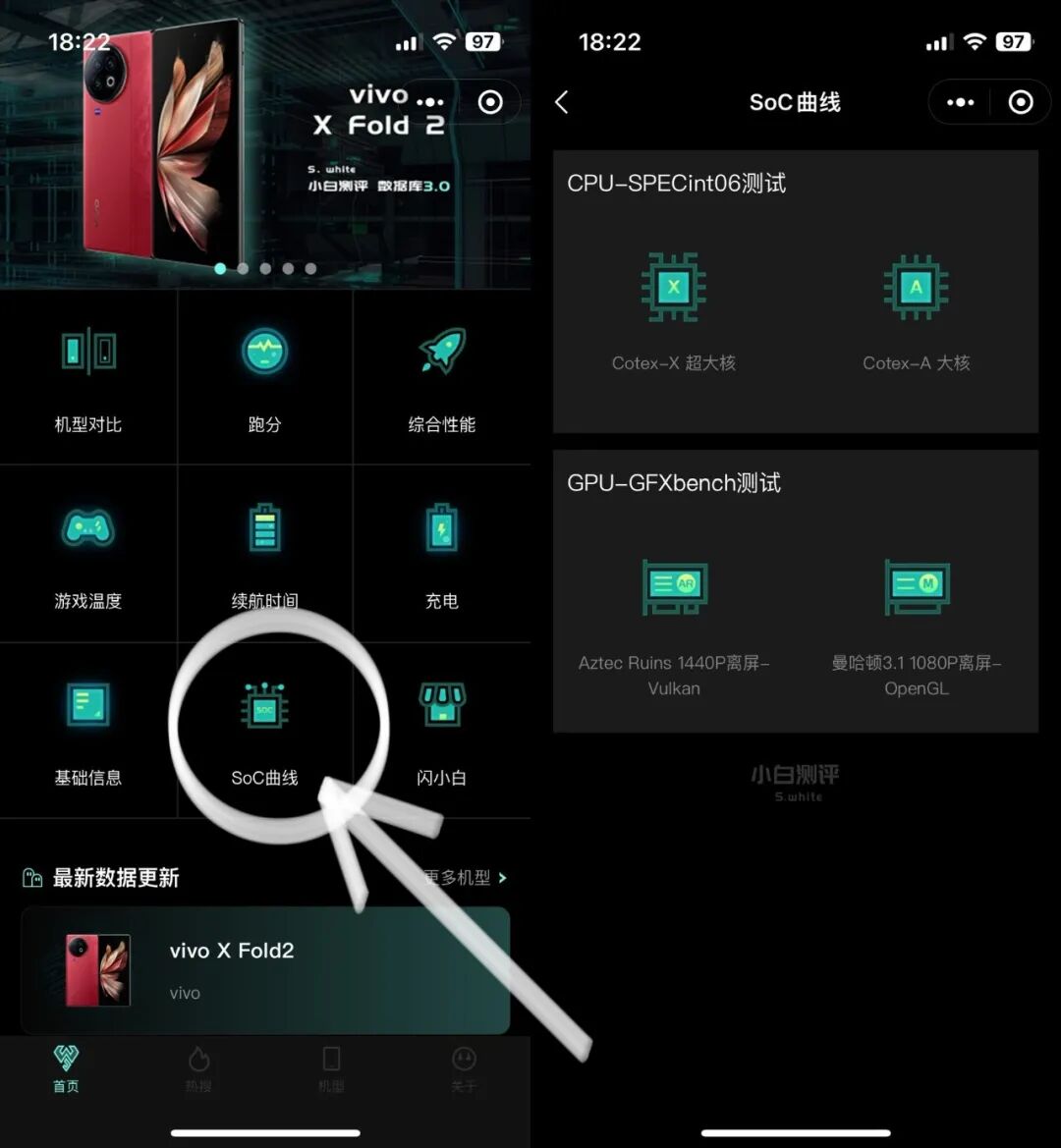
Xiaobai Evaluation Database 3.0 was officially launched on November 5, 2022. For specificdatabase 3.0 analysis, you can click the blue text to review. The latest testing data for new devices will be updated first in the Xiaobai Evaluation Database mini-program, and everyone can enter theXiaobai Evaluation Database to bookmark and view for free. The newly added Snapdragon 7+ Gen2 SoC curve can be viewed in the mini-program homepage under SoC curves, where you can enter each module to see detailed curve changes and compare different SoCs.
Historical Information

